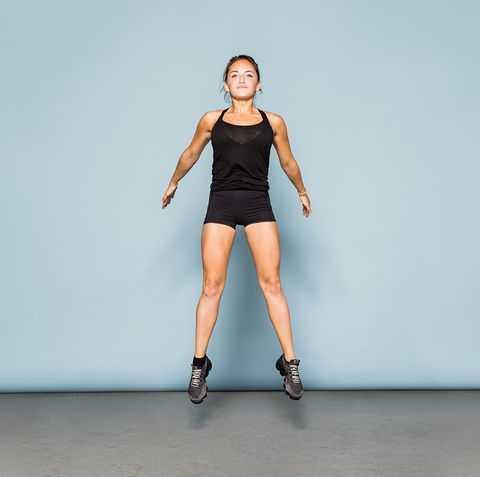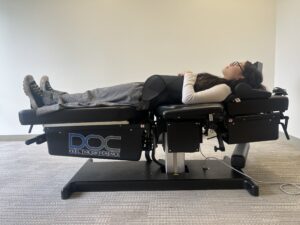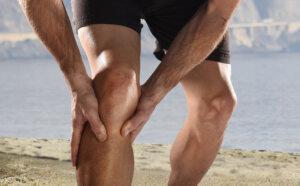Iliotibial band syndrome (sometimes called ITB Syndrome or ITBS) is a common runner’s condition. It can account for up to 22% of the overuse injuries in runners, caused by repeated trauma rather than a specific incident.
What Is The Iliotibial Band (ITB)?
The iliotibial band runs along the lateral (outer) side of the thigh, from the pelvis to the tibia (shinbone), crossing both the hip and knee joints. The iliotibial band is a crucial stabilizing structure of the outer part of the knee during running. It is also involved in other movements that include flexion and extension of the knee joint.
What Is ITB Syndrome?

Iliotibial band syndrome is an overuse injury of the connective tissues that are located on the outer part of the thigh and knee. It is the one of the leading causes of lateral knee pain in runners and bicyclists.
The mechanism of injury includes repeated rubbing of the IT band across the bony condyle of the femur, which leads to inflammation of the tissues and pain and tenderness localized along the outer aspect of the knee joint. If these symptoms are ignored, scarring will develop, leading to decreased range of motion in the knee and worsened pain.
We’ve selected these additional helpful resources for you:
What Causes IT Band Syndrome?
Now you know, ITB syndrome is an overuse injury that occurs most often in long-distance runners, bicyclists, and other athletes who repeatedly squat.
The syndrome may be the result of a combination of issues, such as bad training habits, anatomical abnormalities, or muscular imbalances.
Bad Training Habits Can Cause ITB Syndrome
- Sitting in lotus posture in yoga for long periods of time
- Forcing the feet onto the top of the thighs
- Consistently running on a horizontally banked surface (such as the shoulder of a road or an indoor track)
- Inadequate warm-up or cool-down
- Positioning the feet “toed-in” while running or cycling
- Excessive up-hill and down-hill running
- Running up and down stairs
- Hiking long distances
- Rowing
- Weight lifting, especially with excessive squatting
Anatomical Abnormalities Can Cause ITB Syndrome
- Uneven leg lengths
- Poor foot arch control
- High or low arches
- Supination of the foot
- Excessive lower-leg rotation due to over-pronation
- Excessive foot-strike force
Muscle Imbalance Can Cause ITB Syndrome
- Muscle weakness, especially weakness of the back, hip and knee muscles
- Uneven left/right stretching of the band (could be caused by sitting cross-legged)
What Are The Symptoms and Signs of ITB Syndrome?
Initially,
Sometimes snapping or popping sound at the knee, as well as swelling or thickening of the tissue in the area where the band crosses the femoral epicondyle or below the knee, may be present.
To get to the root cause of pain and discomfort, schedule an initial consultation, including a comprehensive evaluation and first treatment.
How Is ITB Syndrome Diagnosed?
Diagnosis of iliotibial band syndrome by your SF chiropractor is based on medical history and physical examination. Your chiropractor may palpate the area of pain, searching for tenderness and swelling felt over the femoral epicondyle which often can be palpated.
Your chiropractor may also look for some of the causes of ITB syndrome, such as leg-length discrepancy, muscle imbalance, and tightness in the legs and back.
A full physical examination of the low back, hips, knees, and ankles, may be performed to detect other potential causes of lateral knee pain.
Although, X-rays and MRI images are not needed, MRI may be used to look for inflammation surrounding and beneath the iliotibial band or to exclude other causes of lateral knee pain.
What Is The Best Treatment For Iliotibial Band Syndrome?
You may need a
Initial treatment for iliotibial band syndrome includes rest, ice, compression, and elevation (RICE).
Painkillers such as acetaminophen and anti-inflammatory medications, like ibuprofen and naproxen, may be helpful to decrease both pain and inflammation.
Corticosteroid injections applied at the site of inflammation may also be of benefit and provide relief of the symptoms and faster healing.
Home treatment has a big impact and involves stretching, massage, and use of foam rollers at the site of pain and inflammation.
If previous treatments not work, you should consider physical therapy. It may be helpful to decrease the inflammation at the IT band.
Therapeutic ultrasound techniques such as phonophoresis (using ultrasound to propel anti-inflammatory medications through the https://dietitianlavleen.com/get-rid-of-accutane/ skin into the inflamed tissue) iontophoresis (same as phonophoresis, but electricity is used instead of ultrasound) may be used to help decrease irritation in the soft tissues surrounding the knee.
The physical therapist will also evaluate the underlying cause of the problem and provide you with exercises to improve muscle strength, flexibility, balance and gait.
Shoe orthotics may be useful when there is a gait problem, leg-length discrepancy, or pelvic tilt as a potential cause of ITB syndrome.
Surgery is rarely an option. It is only suggested to patients who don’t respond to other treatment options, and who develop chronic inflammation with scarring of the soft tissues.
How To Prevent ITB Syndrome?
The most important thing you can do to prevent and avoid recurrence of ITB syndrome, is maintaining
You must understand the importance of the symmetry in the body and avoid activities that alter that symmetry.
If you are a runner you should change directions when running longer distances, no matter if it’s indoor or outdoor running.
If you are a bicyclist you should be aware of your
According to Supreet Shah, a San Francisco chiropractor at Truspine, you are more likely to suffer from IT band syndrome if you ramp up your mileage too quickly.
If you have the revealing pain at the lateral knee, decrease your mileage or take a break from activities.
You can also do some dynamic stretches before you start your runs to warm up and loosen the IT band. Dynamic stretches include leg swings or walking lunges. If you can find time to foam roll daily for a few minutes on each side is another great way to loosen up your IT band, Supreet Shah says. However, you should never foam roll your lower back or over any bony protrusions. You want to roll slowly from bottom of the hip to top of the knee along the outside of the leg to loosen up the muscles, fascia, and IT band.
And don’t forget that keeping your muscles and other structures stretched is an important part of prevention of many musculoskeletal injuries, including iliotibial band syndrome, so don’t forget to regularly perform your stretching exercises.


Doctor Shah also mentions activating your glutes and core to aid in taking the load off of the IT band. He instructs to do five sets of 10 jump squats four times a week and four minutes of planking every day.
If you are looking for Iliotibial band pain relief and would like to find out if you are a candidate for our treatment we would like to meet you. To get to the root cause of pain and discomfort, schedule an initial consultation, including a comprehensive evaluation and first treatment.



